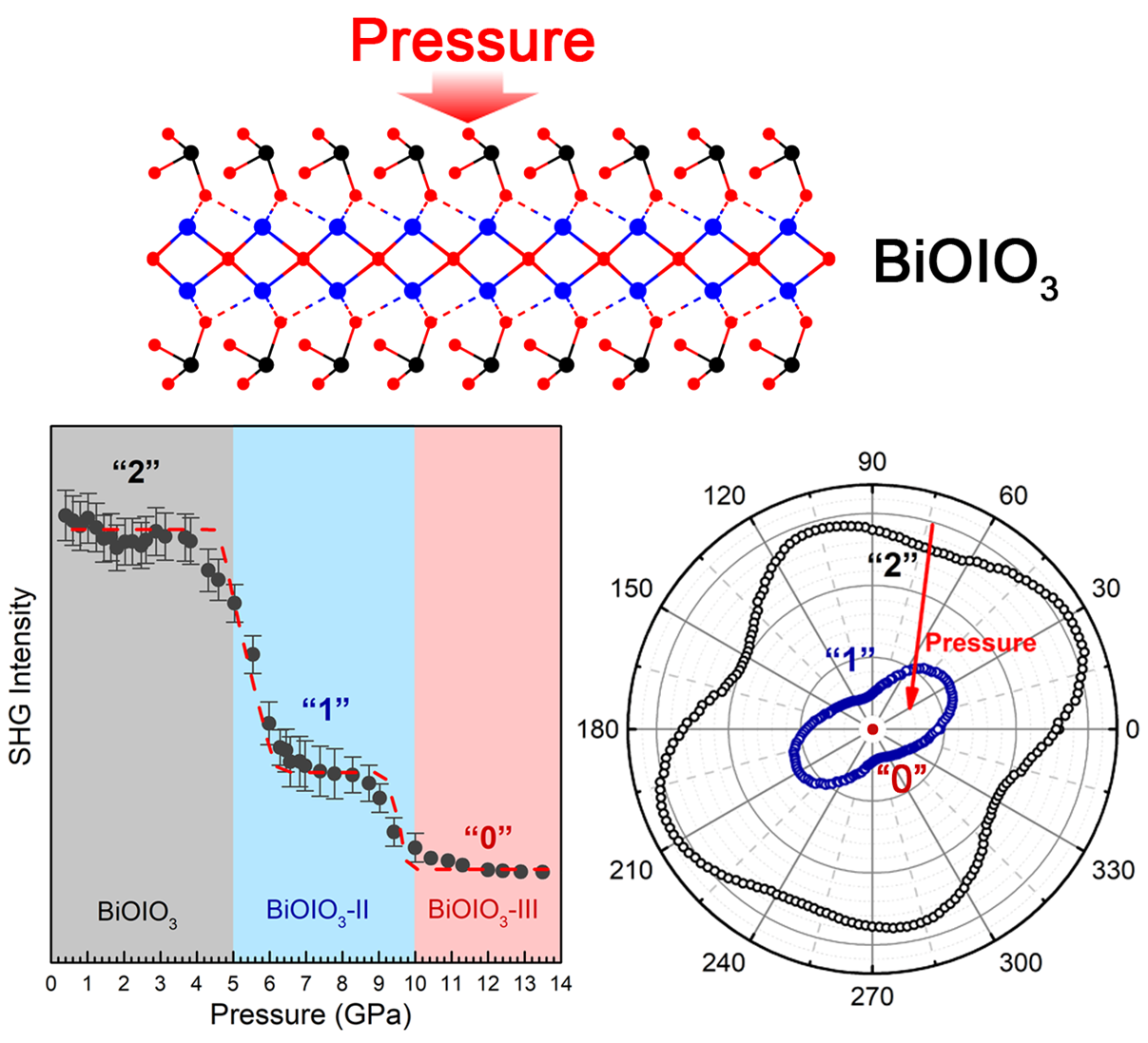Pressure-driven two-step SHG switching in BiOIO3 - Dr. Yonggang Wang
JANUARY 18, 2022
Materials with multi-stabilities controllable by external stimuli are potential for high-capacity information storage and switch devices. Second-harmonic-generation (SHG) as a distinct optical phenomenon is particularly suitable for information storage and readout, nevertheless, pressure-induced multi-step SHG switching material has rarely been reported. A research team led by Dr. Yonggang Wang from HPSTAR in collaboration with Prof. Hongwei Huang from China University of Geosciences (Beijing) reported the first example of a pressure-driven two-step SHG switching in polar BiOIO3. These findings were recently published in Angew. Chem. Int. Ed.
Why are the pressure-induced SHG switching materials so rare? The first reason may be that the requirements for a “switching” material or device is really strict, for example, the property conversion should be sharp and a good chemical stability is the basic requirement. In fact, there are several papers about the pressure-responsive SHG phenomenon, but most of them are either of slow, fuzzy, incomplete on-off transitions, or have only one-step SHG switching. Cations with stereo-active lone-pair electrons are a promising material family with a large SHG response. Pressure is considered to suppress the lone-pair effect, and thus to influence the overall SHG property of materials. An iodate BiOIO3, in which both Bi3+ and I5+ cations contain the stereo-active lone-pair electrons, is promised to achieve a stepwise SHG switching under compression.
Another difficulty for the study of SHG materials under high pressure is the lacking of measurement technique. We built an in-situ high-pressure powder SHG and polarization-dependent single-crystal SHG measurement system in HPSTAR, and got the as-expected SHG-high, SHG-intermediate, and SHG-off three-state SHG switching of BiOIO3 by this system. Structure analyses reveal two pressure-induced phase transitions in BiOIO3 from the ambient noncentrosymmetric phase to a noncentrosymmetric phase and finally to a centrosymmetric phase. HP Raman, XAS combined with DFT calculations also reveal the dramatic increase of the coordination number of I5+ from 3 to 5 under compression. Finally, HP optical absorption spectra show two distinct bandgap discontinuities, which also come from the stepwise suppression of lone-pair electrons. All of the experimental evidences confirm the occurrence of the rare two-step phase transition and property switching in BiOIO3. “The discovery of pressure-induced two-step SHG switching by controlling the lone-pair electrons make a good start on the exploration of multi-step switching materials,” said Dr. Wang.

Caption: Pressure-driven two-step SHG switching in BiOIO3
可控多稳态转换材料具有用于大容量信息存储和开关器件的潜力。二次谐波(SHG)既是一种方便读取的光学效应,又能反映出晶态材料的对称性,具备较大的原位高压研究价值。同时,压力诱导的二次谐波转换材料又鲜有报道。在北京高压科学研究中心王永刚课题组与中国地质大学(北京)黄洪伟课题组合作的一个最新研究中,他们发现一种基于孤对电子的极性材料BiOIO3在压力下具有多步的二次谐波转换现象。晶体结构分析揭示了该材料在压力下历经了从非中心对称到非中心对称再到中心对称的两次相变,伴随着二次谐波信号的强、中、无三种状态转换。局域结构分析表明,二次谐波转换的微观原因是[IO3]-单元上的孤对电子在压力下被抑制,功能单元的配位环境改变也导致了光学吸收边的不连续变化。该工作的关键是一台原位高压偏振二次谐波测试系统的成功搭建。相关成果以“Pressure-Driven Two-Step Second-Harmonic-Generation Switching in BiOIO3”为题发表在Angew. Chem. Int. Ed.上。
